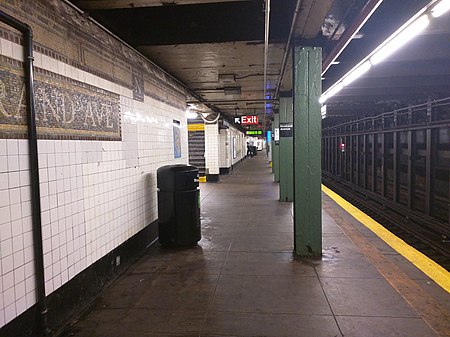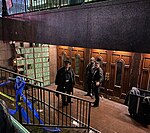Nostrand Avenue station (IRT Eastern Parkway Line)
1920 establishments in New York CityCrown Heights, BrooklynIRT Eastern Parkway Line stationsNew York City Subway stations in BrooklynNew York City Subway stations located underground ... and 1 more
Railway stations in the United States opened in 1920

The Nostrand Avenue station is a local station on the IRT Eastern Parkway Line of the New York City Subway. Located at the intersection of Nostrand Avenue and Eastern Parkway in Crown Heights, Brooklyn, it is served by the 3 train at all times except late nights, when the 4 train takes over service. There is also limited rush hour 2 and 5 service here.
Excerpt from the Wikipedia article Nostrand Avenue station (IRT Eastern Parkway Line) (License: CC BY-SA 3.0, Authors, Images).Nostrand Avenue station (IRT Eastern Parkway Line)
Nostrand Avenue, New York Brooklyn
Geographical coordinates (GPS) Address Nearby Places Show on map
Geographical coordinates (GPS)
| Latitude | Longitude |
|---|---|
| N 40.6698 ° | E -73.95052 ° |
Address
Nostrand Avenue
Nostrand Avenue
11235 New York, Brooklyn
New York, United States
Open on Google Maps







